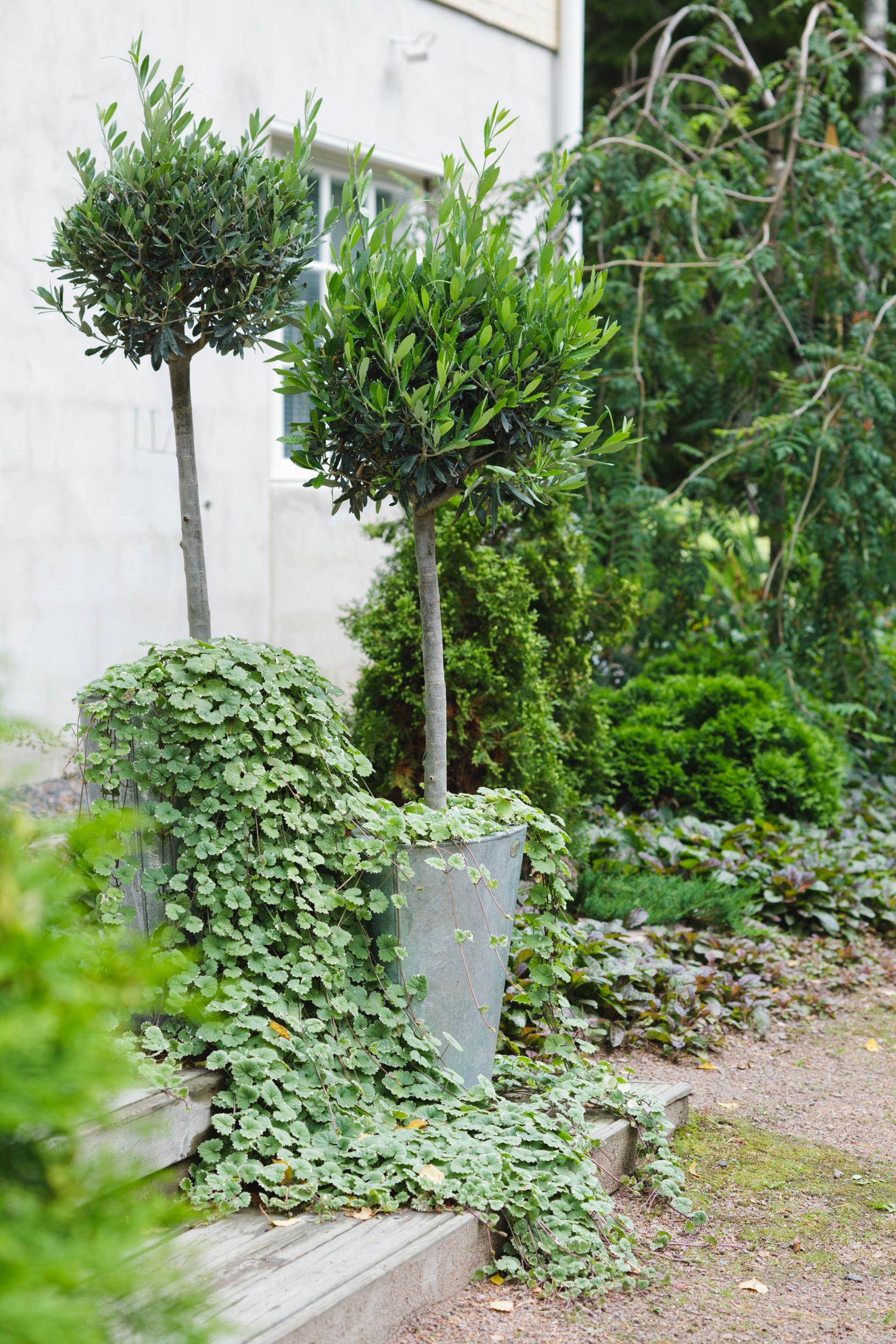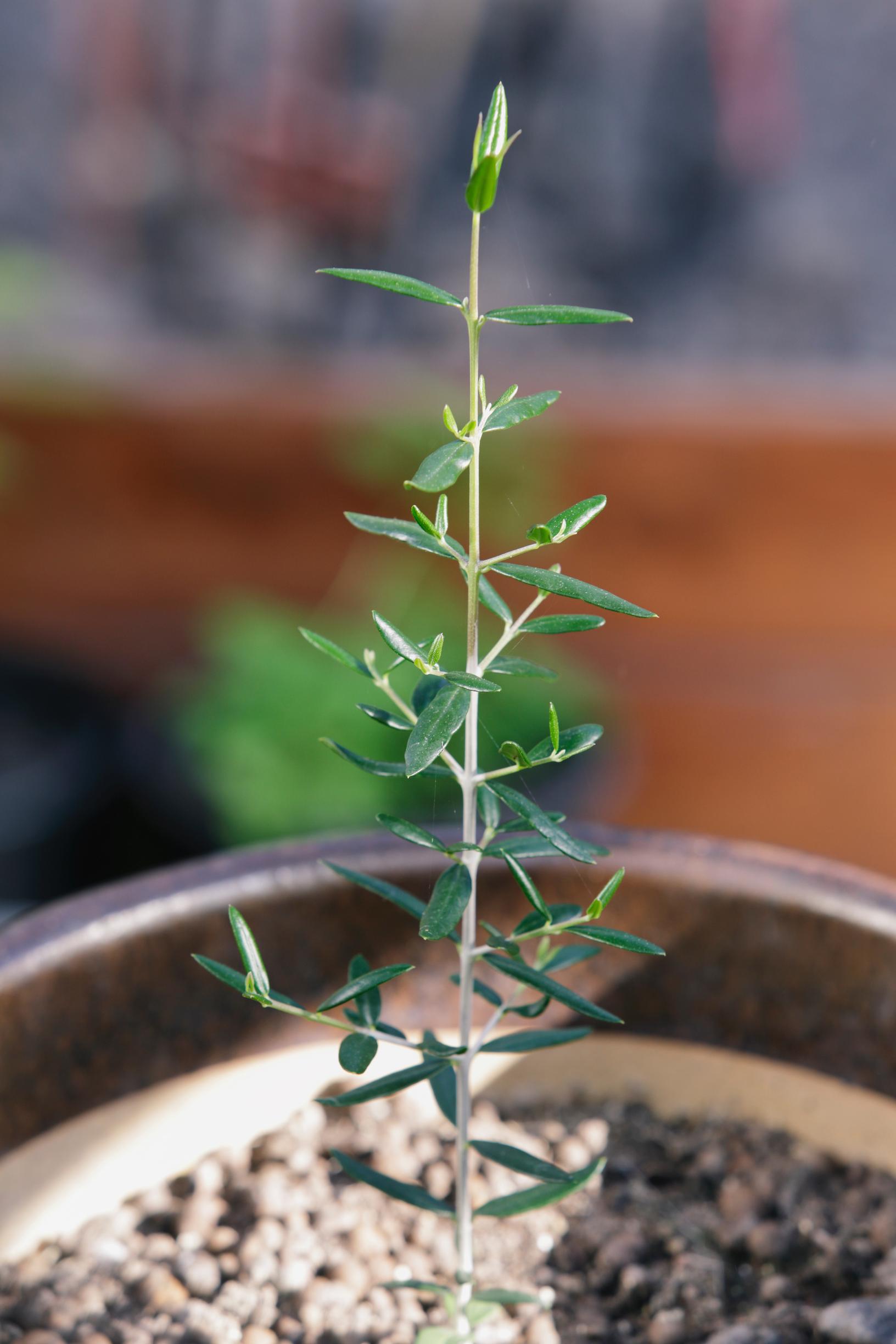
Olive tree care: instructions for growing and overwintering
An olive tree is a beautiful houseplant that also thrives on a balcony or terrace. It’s easier to care for than you might think—check out our article for tips on caring for your olive tree!
Olive tree care: good soil and the right kind of pot
When you bring home an olive tree seedling, replace the soil with a fresh mix. Remove the plant from its pot, and carefully loosen the roots if they’ve become root-bound in a tight container.
Pick a long-lasting potting mix that remains aerated and is rich in nutrients. If the olive tree is cramped, move it to a new pot that’s a couple of centimeters bigger than the old one. Place broken pottery or potting gravel at the bottom for drainage.
Fill up with more soil and plant the olive tree at the same depth as before. Keep the soil surface a couple of centimeters below the pot’s rim so there’s room for watering.
A suitable spot for an olive tree
As a houseplant, an olive tree needs the brightest spot possible. Ideally, it should receive at least six hours of light a day.
Don’t put it directly against the window, as the leaves could scorch in intense sun.
Water and fertilize your olive tree regularly
Water the olive tree thoroughly so the soil is well soaked. Once the top inch (about 2.5 cm) has dried, it’s time to water again. Check moisture by pressing your finger into the soil.
Fertilize every two weeks from spring to fall.

Move your olive tree outdoors in spring once frosts are past
An olive tree will do wonderfully on a balcony, terrace, or in the garden over the summer. If you’ve been growing it indoors, let it gradually adjust to outdoor conditions for a couple of weeks so it won’t be shocked by the change in light and temperature.
At first, place it in partial shade so the leaves don’t burn. Gradually move it to a sunny, sheltered spot for longer periods. You can use a white garden fleece to filter the light. If cold nights are looming, bring it inside or cover it with multiple layers of fleece overnight.
Continue watering and fertilizing consistently throughout the summer, just as you would for an indoor olive tree.
Overwinter your olive tree properly
As autumn approaches, start bringing the tree inside over a couple of weeks. Let it spend less time outdoors, and keep it indoors at night. Avoid placing it right next to a heater while overwintering.
Stop fertilizing in winter. Water thoroughly, then allow the soil to dry between waterings. Mist the tree occasionally to help it cope with dry indoor air.
Place the tree in the brightest spot you can. If it’s too dark, hang a grow light overhead. Use a timer so it gets plenty of light throughout the day.
If you have a cool overwintering spot (5–10°C or 41–50°F), water it less frequently. Light is still important, so set up a grow light near the plant.
An olive tree may drop many of its leaves during overwintering, but new leaves will sprout on bare branches again in spring.
If you’re unsure whether a branch is alive, gently scrape the bark with your fingernail. If you see green beneath, the branch is still viable.
After winter, prune away any dead branches and lightly shape the tree if you like.

Want to grow an olive tree from seed?
Growing an olive tree from seed takes patience, but if all goes well, your efforts can really pay off.
Press the seed about two centimeters deep into well-watered seed starting mix, making sure the pointed end faces up. Cover the sowing with plastic or a halved plastic bottle to keep the soil evenly moist.
Germination can take a long time, sometimes two to three months. Once the seedling emerges and grows to about ten centimeters tall, replant it in regular houseplant soil to provide enough nutrients. Keep your olive seedling in a bright spot.


